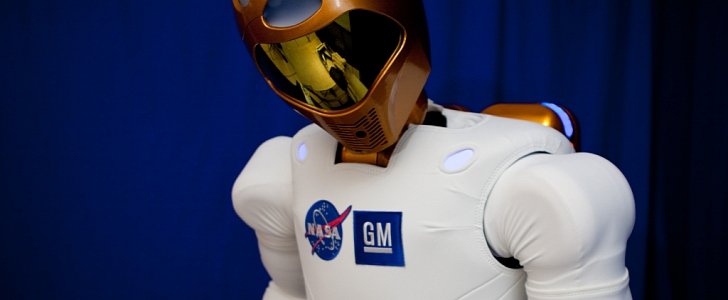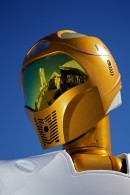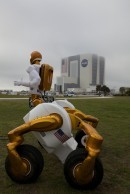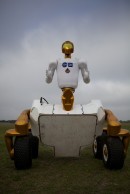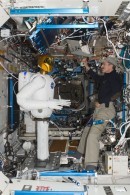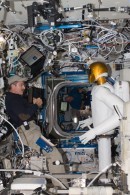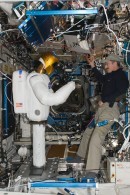Back in the late 2000s, when General Motors was still a force to be reckoned with, the carmaker entered a partnership with NASA to develop a humanoid robot that would live and work on the International Space Station.
Called Robonaut, it was crowned NASA Government Invention of the Year for 2014. The humanoid machine reached space in 2011, aboard space shuttle Discovery, and researched robotics technology in space between 2012 and 2014. And that was about it.
In 2014, NASA tried to go give the robot legs, as the original construction was only comprised of a torso, a head, and arms. For some reason, the space agency believed giving the robot legs would be of much use for it in zero-G.
“The space station program was interested in expanding our reach,” Julia Badger, Robonaut Project Manager told Spectrum.
“If we were able to move around, we could do logistics management; we could possibly clean filters, or do repairs. Moving around was the next level of capabilities that we’d be able to develop and test.”
The leg transplant succeeded, but ever since that moment Robonaut has been malfunctioning: sensor and communication failures, as well as repeated processor lockups became commonplace.
Despite the astronauts' attempts to repair the robot, it never was the same machine again, so for nearly five years, it has been sitting on the space station for no reason.
Apparently, NASA decided to take a more aggressive approach and announced last week that the Robonaut would be sent back to Earth for proper repairs. The exact time when the robot would reach Earth has not been announced, nor did the agency say how much time it estimates the robot would spend back on the planet.
“Thanks, AstroAcaba, and Astro_Sabot, for getting me ready for the flight home! I'm snug as a bot in a... bag full of foam?” the robot’s official Twitter account read back in February.
In 2014, NASA tried to go give the robot legs, as the original construction was only comprised of a torso, a head, and arms. For some reason, the space agency believed giving the robot legs would be of much use for it in zero-G.
“The space station program was interested in expanding our reach,” Julia Badger, Robonaut Project Manager told Spectrum.
“If we were able to move around, we could do logistics management; we could possibly clean filters, or do repairs. Moving around was the next level of capabilities that we’d be able to develop and test.”
The leg transplant succeeded, but ever since that moment Robonaut has been malfunctioning: sensor and communication failures, as well as repeated processor lockups became commonplace.
Despite the astronauts' attempts to repair the robot, it never was the same machine again, so for nearly five years, it has been sitting on the space station for no reason.
Apparently, NASA decided to take a more aggressive approach and announced last week that the Robonaut would be sent back to Earth for proper repairs. The exact time when the robot would reach Earth has not been announced, nor did the agency say how much time it estimates the robot would spend back on the planet.
“Thanks, AstroAcaba, and Astro_Sabot, for getting me ready for the flight home! I'm snug as a bot in a... bag full of foam?” the robot’s official Twitter account read back in February.
